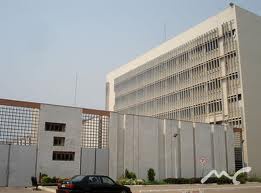 Bank of Ghana
Bank of Ghana
Producer prices continued to slide in September, which points to a tame inflation that could help to argue well against any interest rate increase next month.
The central bank’s Monetary Policy Committee is scheduled to meet in mid-November to take stock of developments in the economy and provide direction for interest rate trends for the rest of the year; and so news from the Ghana Statistical Service office that the average prices of goods and services received by domestic producers for production, referred to as PPI, has gone down could be a booster for interest rates to be at least staggered.
Producer Price Inflation, which is a barometer for future consumer inflation, fell from 3.9 percent in August to 3.7 percent in September, a sustained decline since June this year — when the factory gate prices inched up significantly on the back of a deteriorating cedi, erratic energy supply and corruption allegations.
The latest figures are good news to managers of the economy, after the most recent report on the economy by the Bank of Ghana showed that businesses confidence is fast waning as a result of concerns over industrial and company prospects, rising inflation expectations and high cost of credit.
However, weak demand from thrifty consumers is forcing manufacturers to cut prices. This sent the producer price index lower for the third consecutive month.
This is in spite of the fact that inflation in the manufacturing sector, which constitutes about two-thirds of the country’s total industry, is still a concern after it increased to 4.3 percent, which is more than the national average.
In fact, during the month of September 2015, eleven out of the sixteen major groups in the manufacturing sub-sector recorded inflation rates higher than the sector average of 4.3 percent
The utilities sub-sector, meanwhile, recorded an inflation rate of 7.2 percent in September 2015, indicating a decrease of 1.2 percentage points below the August 2015 rate of 8.4 percent.
Inflation among local producers is even milder in the mining and quarry sector, which decreased by 3.8 percentage point over the August 2015 rate of 1.7 percent to record -2.1 percent in September 2015.
Consumer price inflation has continually moved away from the Bank of Ghana’s target band, forcing the central bank to keep tightening its monetary policy in a bid to contain rising inflation.
Price pressures of goods and services has gained momentum in recent months as a weak currency heats up the economy, which is largely dependent on imports, and coupled with the imminent increases in utility tariffs has forced some economists to caution against reading too much into the latest producer price report since food and discretionary spending still remains fairly high.
Some analysts however believe expectations that the energy crisis can be subdued in the next of months, and lower crude oil prices will help to keep inflationary pressures low.